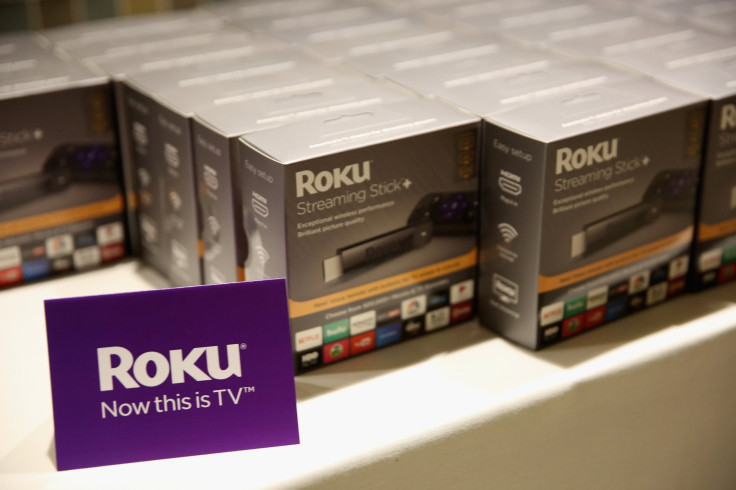Why Amazon Will Beat Roku In Connected TV

Against a backdrop of never-ending cord-cutting, digital streaming video is clearly the future. The smashing success of the likes of Netflix (NASDAQ:NFLX) and Roku (NASDAQ:ROKU) verify it. Advertisers have noticed, too, and are diverting more ad dollars to over-the-top (OTT) television platforms and away from traditional cable.
The connected-television market is still jelling, however, and those same advertisers have taken notice of that as well. They're quickly learning just how fragmented the OTT arena is as an advertising venue, which is making it difficult to buy and gauge their ads effectively.
Roku has arguably come up with the most marketable solution to the problem. But somehow it feels like Amazon.com (NASDAQ:AMZN) is going to end up winning the race to a framework that advertisers can confidently plug into.
It's complicated, and that's a problem
There are "a lot of players in the [connected TV] space," said Marc Bourget, vice president of Samba TV. He added: "These might not be networks or channels, but these are aggregators who, when you look at their offering, they actually present a lot of those premium channels. The CTV space is extremely fragmented."
Samba TV markets a means of measuring viewership of video content, so Bourget is not wrong, and he echoes recent statements from Mike Reidy, NBCUniversal's vice president for digital ad sales. Reidy said: "The challenge if you go through a platform is, you don't know exactly where your ads are running. Yes, it could be connected TV inventory, but you don't know what network, you don't know what shows." Tracey Scheppach of ad-buying agency Matter More Media said earlier in the year, "It's really complex to buy, and that's spooking a lot of buyers off."
Some direct and indirect solutions have presented themselves. Arguably the most notable is the partnership between Roku and Innovid, which are teaming up to offer clear, in-depth ad-campaign reports that combine connected television and traditional cable TV viewership data. It's the most notable simply because Roku is currently capturing a little more than 60% of the connected-TV programmatic ad industry business. Innovid was thrust into the heart of the beast.
In the end, though, it's apt to be Amazon that wins the hearts and dollars of confused advertisers.
Amazon is positioned to win
Amazon has been amassing a trove of detailed data on hundreds of millions of customers for years. To date, it's done little with it. That could be changing soon, though. With Amazon's advertising machine just now fully revved up, eMarketer predicts the e-commerce giant will win 13% of the United States' search advertising market -- largely at the expense of Alphabet (NASDAQ:GOOGL)(NASDAQ:GOOG) breadwinner Google.
Amazon, like any other web-based enterprise, is further along the search-ad learning curve than it is along the OTT-ad learning curve. Amazon is a quick study, though. The evidence: As of early 2016, Roku controlled nearly half of the OTT streaming device market, versus Amazon Fire TV's 16%. Now Roku's share is 39%, whereas Amazon's is a respectable second at 30%.
The two trajectories should concern investors who believe Roku will readily maintain its lead in the CTV ad-spending space.
Amazon brings two other upsides to the table that could eventually prove disruptive, too. One of them is deeper pockets to develop or acquire whatever measurement tool advertisers want. The other is a mountain of information on a few hundred million Amazon e-commerce customers, and nearly 100 million Prime subscribers with existing viewing data -- and other spending-habit information -- that a would-be advertiser would like to leverage.
For perspective, as successful as Roku has been, there are still only a little over 30 million active users of its devices.
What that future might look like for Amazon's video ad business isn't perfectly clear; not even the company seems to know where it's all going. Wherever the connected TV path is leading, though, it's prepared for the trip.
Patience is required
It's been a long journey since advertisers first started to believe streaming television could be a viable ad platform. And, although a key problem has now been clearly identified, don't look for any player to immediately lead the industry into a paradigm shift. Platform providers like Roku, Amazon, Google, and even Apple (NASDAQ:AAPL) with its Apple TV still have much to figure out about offering the detailed consumer and measurement data that advertisers want.
This may be one of those areas that's worth the wait, though, even for a multifaceted tech company like Amazon that makes money in so many other ways. eMarketer estimates that over $70 billion will be spent on buying television ads this year, but linear/cable TV continues to lose that revenue to connected TV options. Even a modest fraction of that spend would be a nice bump for the world's biggest e-commerce outfit.
John Mackey, CEO of Whole Foods Market, an Amazon subsidiary, is a member of The Motley Fool's board of directors. Suzanne Frey, an executive at Alphabet, is a member of The Motley Fool's board of directors. James Brumley owns shares of Alphabet (A shares). The Motley Fool owns shares of and recommends Alphabet (A shares), Alphabet (C shares), Amazon, Apple, Netflix, and Roku. The Motley Fool has the following options: short January 2020 $155 calls on Apple and long January 2020 $150 calls on Apple. The Motley Fool has a disclosure policy.
This article originally appeared in The Motley Fool.




















